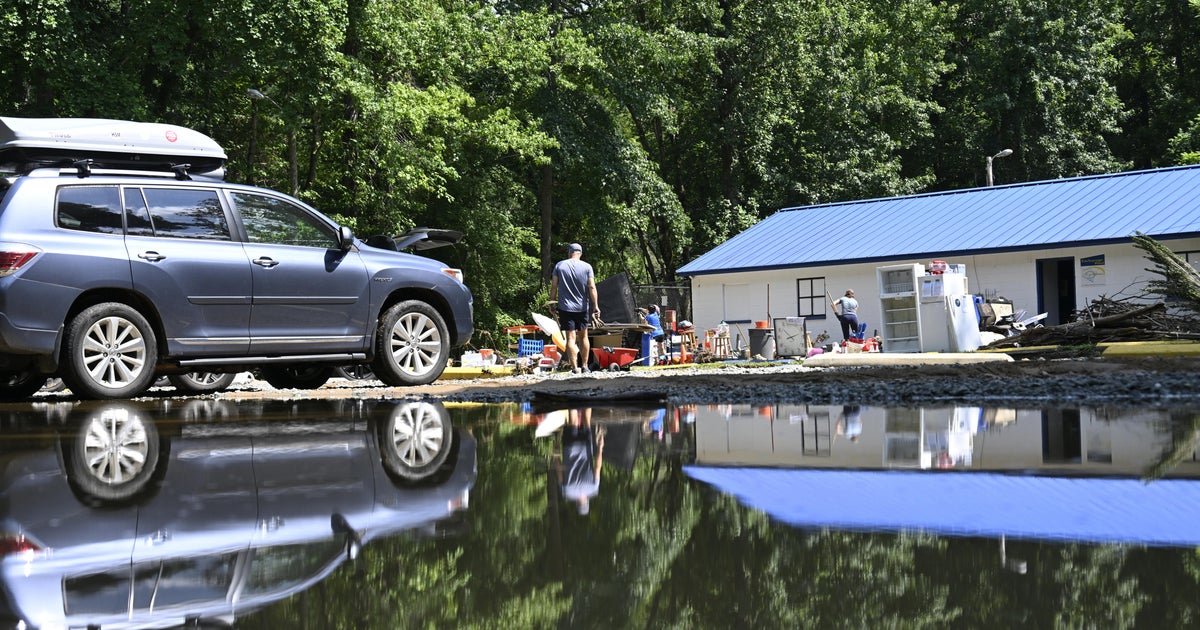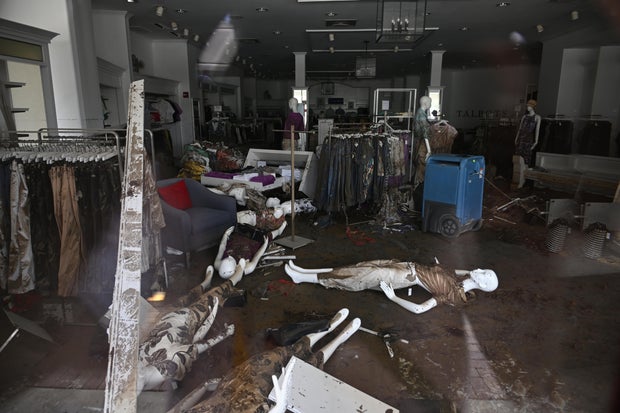North Carolina authorities are blaming two deaths on flooding from one-time Tropical Storm Chantal, which was off the coast of New Jersey late Monday night, according to the National Hurricane Center, in Miami.
The center said Chantal had weakened all the way into a post-tropical cyclone, with maximum sustained winds of 25 mph, and was expected to continue moving northeast. All flood watches were discontinued.
The Orange County Sheriff’s Office said crews searching for a missing Person County woman found her body Monday evening. She went missing while heading to work in Orange County Sunday night during heavy rainfall from Chantal, the office said, adding that deputies first found her vehicle with no one inside, then located her body.
North Carolina’s Department of Public Safety said Monday night that an 83-year-old woman died in floodwaters as Chantal moved over the state Sunday night.
Remnants of the storm system caused flash flooding in numerous counties, including Chatham County, where the victim’s vehicle got stuck in high waters and was swept away, CBS affiliate WNCN reported. Authorities were also searching for two canoers who went missing during the storm on Jordan Lake, according to a county sheriff’s office statement.
There were dozens of water rescues, many of them in areas where floodwaters entered or threatened to enter apartments, authorities in Chapel Hill said.
Peter Zay/Anadolu via Getty Images
Alesia Ray, 65, stood on a second-floor staircase at her apartment building in Chapel Hill for five hours, clicking a flashlight, until rescuers in a rubber boat got her out. Below her, floodwaters wrecked her home.
“It was really scary,” she said Monday as she and fiance Thomas Hux worked to salvage some of their belongings. “I’ve never experienced anything like that. I don’t want to go through that again.”
Chantal was downgraded to a tropical depression Sunday after making landfall in South Carolina as a tropical storm. It hit land near Litchfield Beach at about 4 a.m. ET Sunday, the hurricane center said.
Floodwaters inundated Chapel Hill’s Eastgate Crossings shopping center, where the red-framed glass doors of a Talbots store were blown in and debris-specked white mannequins littered the floor. Next door, at the Great Outdoor Provision Co., manager Chad Pickens said kayaks ended up 30 feet from where they had been on display, and shelves in the shoe room were toppled like dominoes.
Peter Zay/Anadolu via Getty Images
What happened there pales in comparison to the floods in Texas, he said.
“The bottom line is these are just things, and while it hurts to lose things, it’s a lot different to losing people,” Pickens said.
The National Weather Service office in Raleigh, North Carolina, said the Haw River was cresting at 32.5 feet and just under 21 feet at different points – both barely below record levels seen during Hurricane Fran in September 1996.
Earlier, Orange County Emergency Services declared a state of emergency due to flash flooding and issued voluntary evacuation notices for many people downstream from the Lake Michael dam due to the possibility it could fail. Officials there reported “numerous water rescues and evacuations” in low-lying areas.
Chatham County said on its official X account that part of NC Highway 902 near Chatham Central Rd. had collapsed.
“Over 100 roads across the county are flooded, and flooding is expected to continue through tonight and tomorrow—even after the rain ends,” the county said.
Just before 8 a.m. on Monday, almost 24,000 homes and businesses in North Carolina had now power, according to poweroutage.us.
Forecasters said dangerous surf and rip currents at beaches from northeastern Florida to the mid-Atlantic states were expected to last for the next few days.
The Atlantic hurricane season lasts from June 1 until Nov. 30, with peak activity typically occurring between mid-August and mid-October.
NOAA officials predicted a 60% chance of an “above-normal” Atlantic hurricane season, with between 13 to 19 named storms. Six to 10 of those are expected to strengthen into hurricanes, and three to five could become major hurricanes, forecasters said.
(Except for the headline, this story has not been edited by PostX News and is published from a syndicated feed.)



